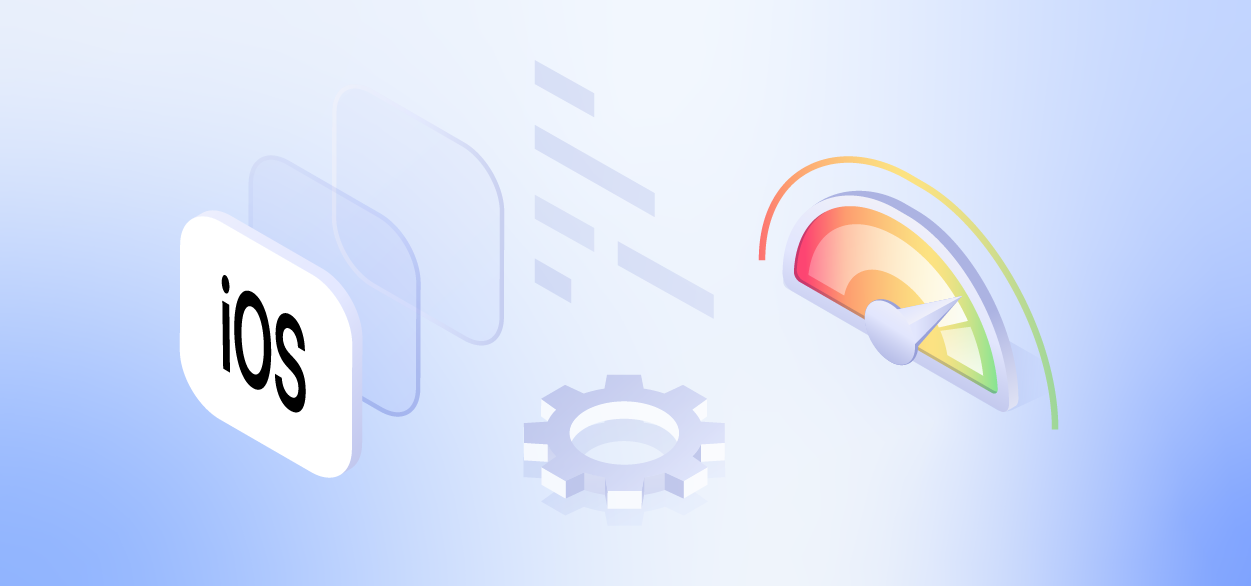Banks and traditional financial institutions operate in a more competitive environment than ever. During the last decade, banking habits and customer expectations have shifted entirely. The emergence and subsequent explosion in popularity of fintechs presents a new challenge to banks. By 2025, anywhere from 10-40% of bank revenues could be at risk from fintech competitors. How do traditional financial institutions cope?
Interestingly, one of the main challenges for banks is also the key to their continued success in today’s fast-changing, ultra-competitive digital finance world. Mobile finance apps have stricter performance requirements and less tolerance for failure than other consumer services. In digital finance, perfection is the key to retention. For banks to keep their customers, they’ll have to literally outperform their competition.
In this article, we’ll find out why fintechs are flourishing, define specific mobile challenges for banks, explore the relationship between app performance and revenue, and outline a strategy for superior app performance. This post is a summary of an Instabug Live webinar—the full content goes in-depth about performance monitoring strategies for banks and can be accessed here.
The mobile finance landscape
The mobile revolution has completely redefined the average person’s banking and financial habits. Online banking is now the preferred way to manage finances, with 90% of all transactions performed digitally. This trend heightens the importance of a bank’s digital products and services, whether web portal or mobile app, and their quality, which can be summarized as a combination of speed and stability. The other major pressure on banks, aside from a preference for digital services, is competition from fintechs.
Competition in the banking sector has grown fiercely since 2020. Fintech competitors have eclipsed traditional banking in mobile app user growth. According to a report by Amplitude, the number of daily active users of fintech apps grew 337% between 2020 and 2021.
Not only are newer fintechs acquiring and keeping users at a faster rate than other financial institutions,they are also attaining higher rates of user satisfaction. In the App Store, companies that were founded after the emergence of widespread mobile banking (around 2010) average a 4.8 out of 5 star rating, a full 20% higher than the average rating for the top 50 apps in the Finance category. They also release updates nearly twice as often as older banking institutions do, and that higher release frequency is correlated with higher app store ratings and visibility.
The cost of competition for traditional financial institutions is steep. According to a study by McKinsey, by 2025, anywhere from 10-40% of bank revenues could be at risk from fintech competitors. For banks to compete, they must understand why fintech apps are flourishing—including the drivers of mobile finance app user retention and satisfaction.
App performance is app success
User adoption and satisfaction are traditionally the purview of marketers and product managers, but mobile developers and QA teams have a significant role in the attainment of these metrics when it comes to mobile apps. A major contributor to retention figures for finance apps is the app’s technical quality, namely performance and stability (related: A Guide to Mobile App Stability). In fact, one of the biggest app traps for banks is overinvesting in marketing and user acquisition and underinvesting in mobile performance.
Quality of app performance impacts app store visibility and rankings. In digital finance, faulty releases have severe consequences. For example, a one percent lower stability rating can lead to a 1-star drop in ratings. The higher the percentage of users experiencing crashes, the higher the drop in ratings a company can expect. A 2-star drop in ratings typically results in a 50% lower user acquisition rate. According to a report by AppFollow, the conversion rate of app store ads in the finance category ranges from 1-38%, and the biggest influence on that variation is the app’s rating.
App performance failures also have a major impact on brand perception. Customers have little tolerance for glitches in finance apps: 66% of consumers claim they would avoid brand known for delivering a poor digital experience, and nearly one-third of smartphone and tablet owners would change banks if a mobile app didn’t meet their expectations. Switching banks is a high-effort move for customers. They may be slower to churn than in other industries, but the risk for banks is severe. Acquiring new customers can cost six to 10 times more than retaining existing customers.

On the flipside, great performance translates not only to existing customer retention, but also to adopting churned customers from other apps. And even a small increase in retention can have a significant impact on customer lifetime value. Businesses that boost customer retention by just 5% can see increases in profits ranging from 25%-95%.
Mobile-first performance strategy for digital finance apps
What does the perfect finance app look like? To outperform competitors, an app must deliver a superior user experience, both in terms of functionality and performance. Responsiveness, stability, and security are all critical to maintaining an app’s users and positive ratings. To achieve this level of quality, an app must be mobile-first and developed with mobile-first tools that maximize observability (related: The Benefits of Observability for Mobile App Developers).
A variety of determinants comprise mobile app performance , but there are six key principles that contribute to superior technical quality and end-user satisfaction. Each of these performance principles help create an environment that catches errors before they impact retention or revenue.

Testing
Continuous testing exposes flaws and refines the user experience. Testing reduces production errors by up to 70%. Bug Reporting cuts down on the time, cost and resources needed to debug and repair issues by automatically capturing device and session details.
User feedback
Direct user feedback delivers insights about the user experience that may otherwise be overlooked and can accelerate the identification of product-market fit for features. Targeted surveys collect valuable customer input. With Instabug, you can route positive reviewers to the app stores and collect negative feedback privately to protect your overall ratings. Two-way chat with users allows you to keep them in the loop regarding bugs or feedback.
Monitoring
Application Performance Monitoring (APM) is preventative maintenance for financial institutions, catching outages and issues before they impact revenue. APM improves your users’ experience without their need to report an issue or contact customer support You can set performance thresholds and receive immediate alerts when failures or errors occur. Instabug APM separates signal from noise, reducing the time investment needed to filter and identify issues.
Stability
Powerful Crash Reporting is an app’s primary defense against uninstalls. A drop in stability rating of just one percent can lower an app store rating by one star. Fifty-three percent of users uninstall apps that crash, and 80% will give a problematic app less than three tries before uninstalling it. With Crash Reporting, you can monitor and improve app stability by identifying the precise line of code that caused a crash.
Security
Data privacy and security are crucial for financial services apps, which process extremely sensitive information. Financial services apps need to have full ownership of their data and use third-party tools that prioritize security. Instabug is compliant with advanced enterprise security requirements.
Development
Aim for frequent incremental changes and optimizations. Banks need to be agile; newer fintech apps release updates roughly twice as often as traditional banking apps. To keep up, banks need to adopt new tools to accelerate their release frequency. Instabug APM frees up debugging time for core development priorities.
Takeaways
A finance app’s technical performance is critical to its user retention and satisfaction—and overall success. Improving an app store rating is a comprehensive undertaking focused on enhancing app quality. Holistic quality improvement has six main points of focus: testing, user feedback, stability, monitoring, security, and development. The perfect finance app makes no compromises in end-user experience.
Striving for perfection requires robust tools capable of detecting all kinds of performance anomalies before they impact end users. A combination of APM, Crash Reporting, Bug Reporting, and Surveys comprehensively assesses the user experience from all contexts and perspectives. These tools also allow you to measure performance numbers accurately and align digital teams around shared KPIs. Instabug tools integrate with your other tools and team members to improve workflow efficiency and redirect resources and focus to deliverables. Investing in app performance tools is the fastest way to make progress toward improving your app quality and overall ratings.
This blog post summarizes the webinar, “How Digital Finance Leaders Bank on a Mobile-First Approach: Future-Proof Your Digital Finance Strategy With Next-Generation Mobile Performance Monitoring.” You can access the full webinar, with a full performance monitoring strategy walkthrough, below.
Learn more:
- Harnessing Mobile-Led Growth: The Case for Mobile App Performance
- The Case for Super Apps: Why Enterprises Are Building Them Now
- How Much Your Mobile App Performance Costs Your Business
- Mobile App Quality: an Essential Guide
Instabug empowers mobile teams to maintain industry-leading apps with mobile-focused, user-centric stability and performance monitoring.
Visit our sandbox or book a demo to see how Instabug can help your app












